





| Yellow Wagtail (Motacilla flava (Linnaeus, 1758)) |






|
|
Scientific name: Motacilla flava (Linnaeus, 1758) Common name: Yellow Wagtail French name: Bergeronnette printanière Order: Passeriformes Family: Motacillidae Size: Body size: 17 cm; Weight: 23 g; Wingspan: 28 cm. Habitat: Marshes, damp meadows, cultivated areas near water. Food: Insects and larvae, spiders, worms and small molluscs. Nesting: The nest is made on the ground by the female with stems, leaves and mosses. It is lined with hair. She lays five to six eggs in May-June. There is sometimes a second brood in July. Migration: European populations winter south of the Sahara in tropical Africa. North African populations are sedentary. Geographic area: Europe, Middle-East, Asia, North Africa, Alaska. |
The Yellow Wagtail is a slender bird with long legs and a long tail. The under side is yellow and the upper side is greenish brown. You can notice white or yellowish wing bars. Females are a duller colour, like males in winter plumage. The coloration of males' head varies and is used to classify populations in more than twenty subspecies, six of them breeding in Europe. The Motacilla flava flava subspecies, also called Blue-headed Wagtail, has a greyish blue head, a white supercilium stripe and a darker patch near the eye. It breeds from Western France, east to Central Europe. The Motacilla flava flavissima subspecies, also called Yellow-crowned Wagtail, has a greenish yellow head and a yellow supercilium stripe. It breeds in Great Britain and on the English Channel coasts. The Motacilla flava iberiae subspecies, also called Iberian Yellow Wagtail, has a darker grey head, almost black at the back of the eye, and a thin supercilium stripe. The throat is white. It breeds in south-western France, in the Iberian peninsula and in north-western Africa. The Motacilla flava cinereocapilla subspecies, also called Ashy-headed Wagtail, has a large white throat and no or a vestigial supercilium stripe. It breeds in Italia and in the Balkans. The Motacilla flava feldegg subspecies, also called Black-headed Wagtail, has a shiny black cap. It breeds in the Balkans and in the Middle-East. The Motacilla flava thunbergi subspecies, also called Dark-headed Wagtail, has a very dark grey head. The throat is yellow. It breeds in Scandinavia and in northern Russia. The Grey Wagtail (Motacilla cinerea) has a longer tail and is grey on the upper side. |
| [To know more about the Yellow Wagtail] [Next picture] [Top] |
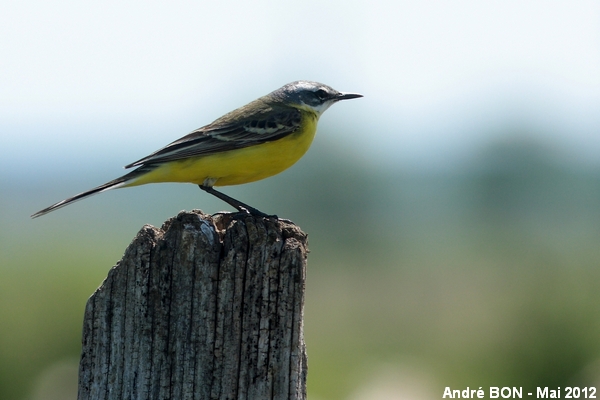
|
The tail is a little shorter than on Grey Wagtails. |
| [To know more about the Yellow Wagtail] [Next picture] [Previous picture] [Top] |
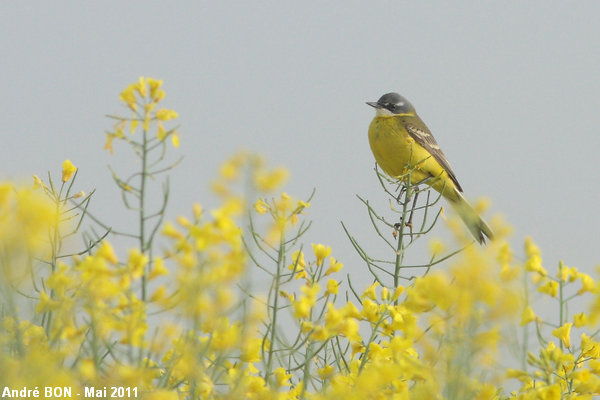
|
We are here in the breeding range of the Motacilla flava flava subspecies (though the throat appears rather white here and the supercilium stripe is interrupted …) The yellow colour of Rapeseed flowers suits well with the yellow colour of the under side of the Yellow Wagtail. |
| [To know more about the Yellow Wagtail] [Next picture] [Previous picture] [Top] |
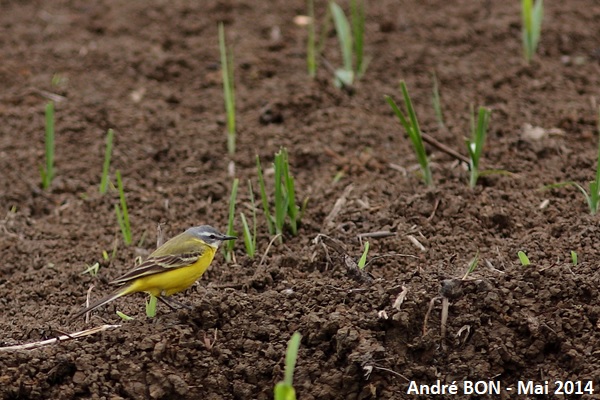
|
You can also observe Yellow Wagtails on the ground in cultivated fields. |
| [To know more about the Yellow Wagtail] [Next picture] [Previous picture] [Top] |
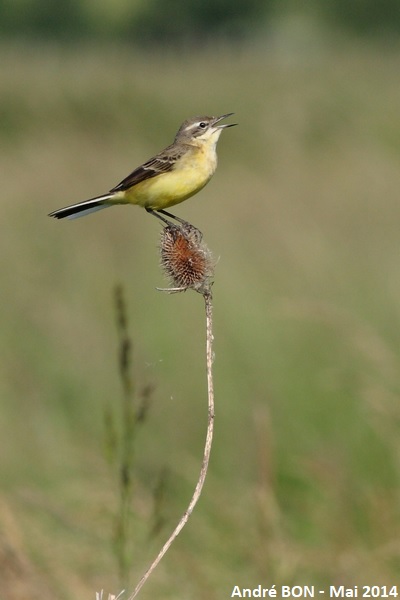
|
We are in Spring and birds are singing everywhere. This Yellow Wagtail is taking part to the concert. |
| [To know more about the Yellow Wagtail] [Next picture] [Previous picture] [Top] |
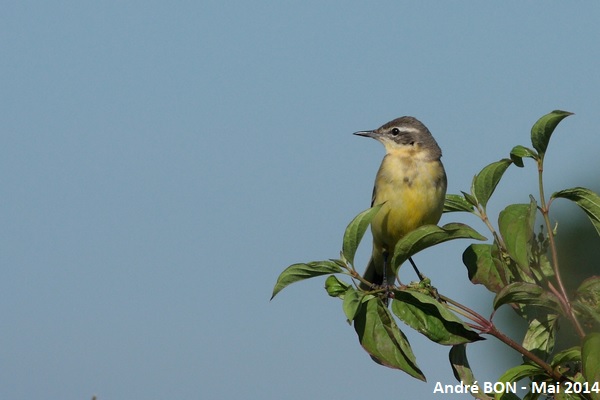
|
Pictures with the blue sky in the background are not very aesthetic. You must always try to find another angle of view but this is not always very easy. |
| [To know more about the Yellow Wagtail] [Previous picture] [Top] |
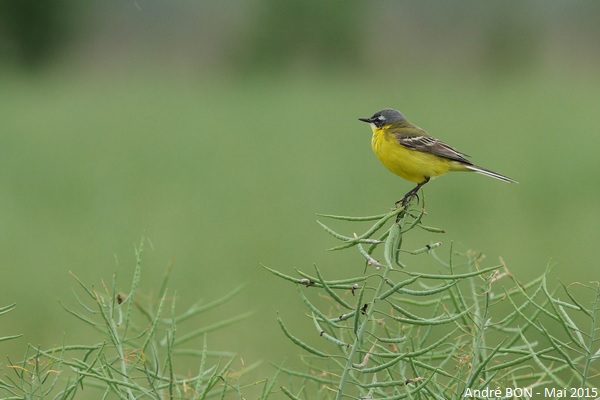
|
My visits to the Basse Vallée du Doubs do not always match the Rapeseed flowering season, but a green background colour is not so bad for the Yellow Wagtail either. |